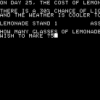Ignoring all the distractions (inspirations, websites, cute design tools and the like) I will pursue the mechanics the old pen & paper style (or keyboard & forum since that's what is used nowadays) :D
So, back to the mechanics (reminder of the desired characteristics):
- the map is made of systems/planets connected by starlanes (so predefined paths/connections)
- the player moves several fleets (not a single big one) to defend/attack
- the key is the control of territory (system), once you are there they can't get rid off you too quickly (also there are choke points and you can't "teleport" behind "enemy lines")
- there should be relatively low or moderate loses (not all ships lost in one big battle in a single turn), so there need to be some retreat mechanic (the goal of a battle is not to destroy enemy fleet but to force them to retreat from the system)
Rules of moving: (need polishing and clarification)
- you can move your fleet up to 4 systems as long as the path is free of any enemy fleets
- if you move to unexplored system the fleet stops (ends turn)
- you can move to a system occupied by enemy if you move from a system not enganged in battle (no enemy or enemy retreats/broken)
- you can move from a system with enemy fleet only to a system that is under your control OR to anywhere if your fleet is at least 20 times stronger (no single ship stopping an armada)
- anytime you can click "return to base" button (confirmation will be given), a while flag appears on your fleet and it auto retreats to the nearest military base ar a speed of 3 systems per turn ignoring all enemies, not scanning anything, etc (ghost mode), then it needs to stay in the miltary base for additional 1-2 turns; also that fleet gets a small morale loss
Rules of combat:
- when two opposing fleets meet in one system a battle occurs at the end of turn
- the battle continues each turn until one fleet moves away (if possible), retreats willingly or is forced to retreat
- when one fleet is much weaker it's forced to retreat after just one turn of battle, it also gets a significant morale loss
- during battle ships can be destroyed (not that often), heavily damaged, light damage, not damaged
- the fleet moves and retreats as a whole (single ships never leave fleet or move alone)
Rules of reinforcements:
- ships within a fleet can slowly repair on their own (bonuses possible)
- when a fleet is not moving and/or is orbiting a friendly planet the repairs are significantly faster
- heavy damaged ships are repaired only when the fleet is orbiting a system with a military base or a shipyard
- newly produced ships can be "teleported" to the fleet as they are produced, but there is a limit how many reinforcements can a fleet recieved per turn (if in battle almost none, if orbiting a shipyard unlimited)









